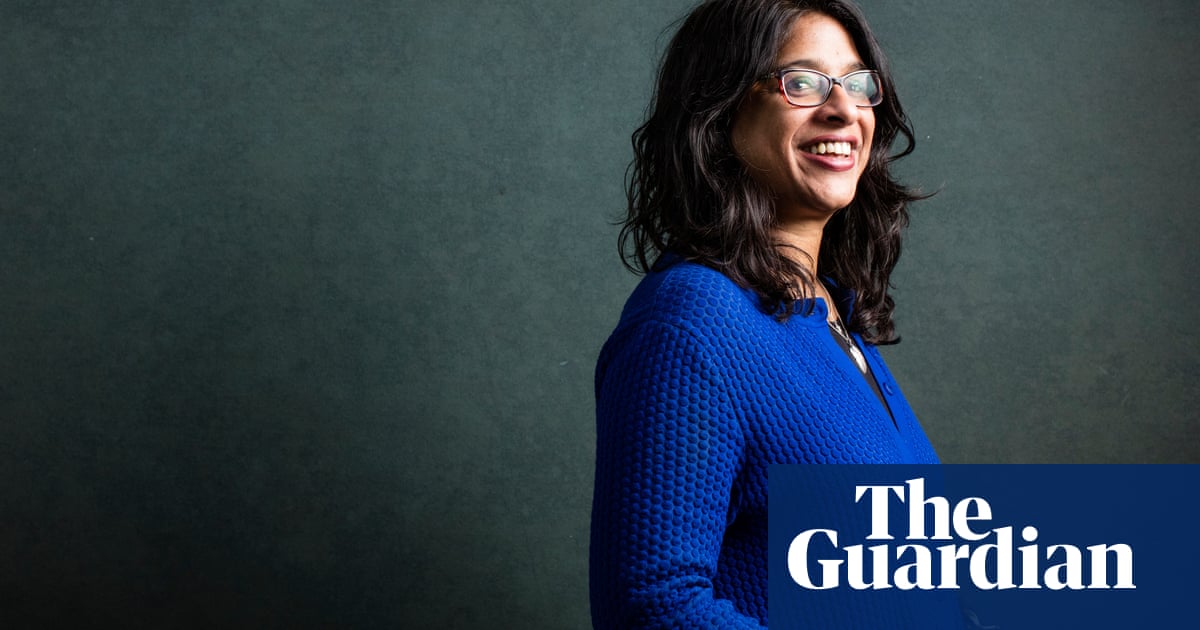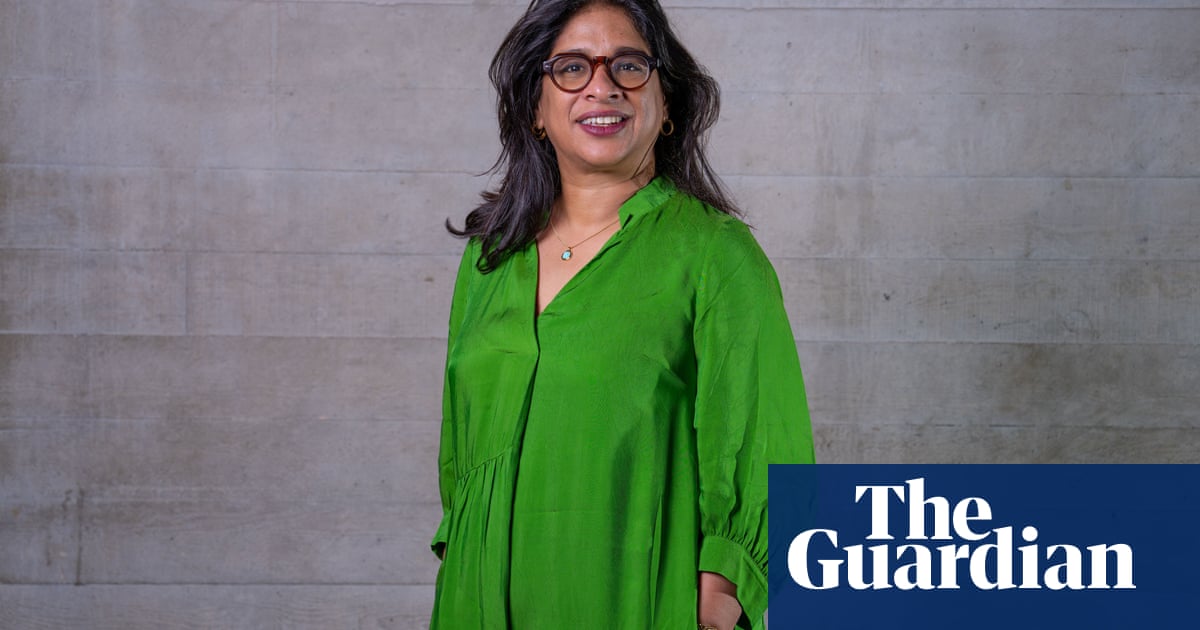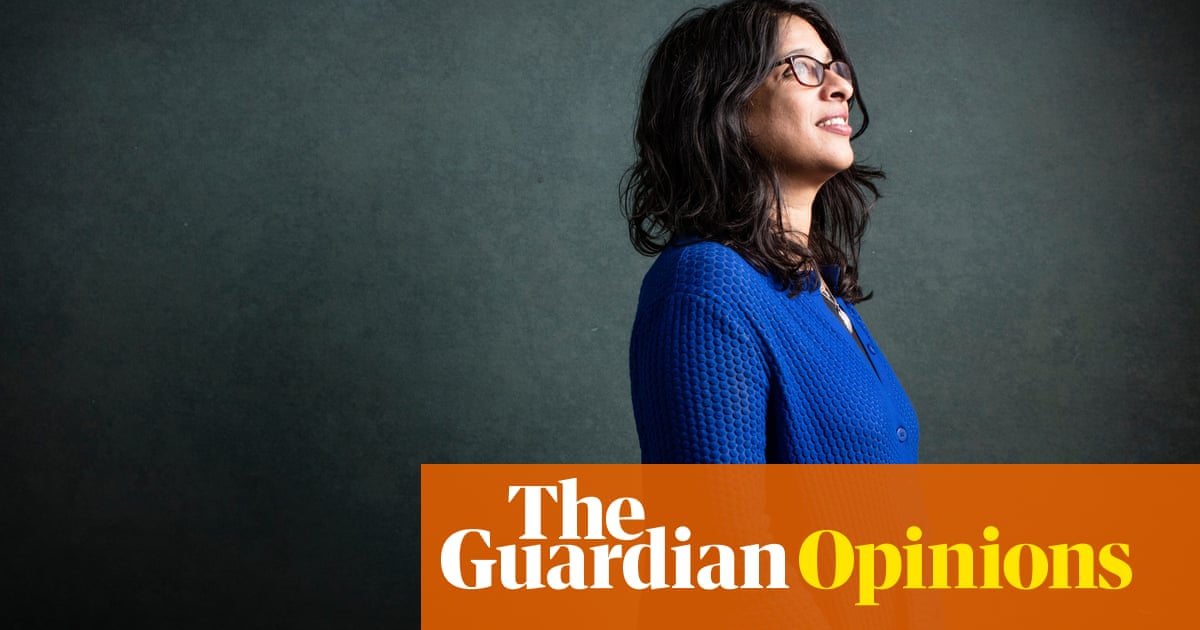
In 1978, Julia Pascal became the first woman to direct a performance at the National Theatre in London. It caused some press attention. Peter Hall, the artistic director, confided to his diary: “goodness, women directors can direct, just as birds can sing”.
Hall may have sounded bemused, but it was a further three years before a woman would direct a full production at his theatre (Nancy Meckler with Who’s Afraid of Virginia Woolf?), and a further 42 years before the National managed to appoint a woman to lead the organisation itself. Indhu Rubasingham will become the National’s seventh artistic director (following Laurence Olivier, Hall, Richard Eyre, Trevor Nunn, Nicholas Hytner and Rufus Norris) and the first woman, and the first person of colour, in the role.
The theatre world has responded to her appointment with unfeigned delight and a reflection that it’s about bloody time. Women currently lead many prominent theatres: among them, Michelle Terry at Shakespeare’s Globe, Nancy Medina at Bristol Old Vic and Rachel O’Riordan (reportedly shortlisted for the National job) at the Lyric Hammersmith. But Rubasingham moving from the highly regarded Kiln theatre to the big seat at the National is a statement of intent for the entire industry.
Like most big jobs, it’s more than a little impossible. The National’s artistic director must lead the institution and also set a direction of travel for the theatre industry as a whole. When advocacy is required – in response to a pandemic, funding crises or the shrinking of school arts provision and university courses – Rubasingham’s will be the first voice people want to hear.
Leadership looks different from when the National opened in 1963. Olivier, its first artistic director, was heir to a long tradition of actor managers – leading from the spotlight (a spotlight, according to his co-star Maggie Smith, that he had subtly brightened to pull attention whenever he was on stage). The young actors in his happy band (Michael Gambon, Derek Jacobi) were in awe of him, and enjoyed being awed.
Few directors can play Henry V offstage as well as on, leading their company through charisma alone. Hall and Eyre both published diaries from their time in the hot seat, chronicles of physical and emotional crises recorded in the hot ink of despair (Eyre typically noting “constant feelings of panic, insecurity, inadequacy”). The job demands long days: planning meeting, rehearsal, technical meeting, unscheduled tantrum, performance and then slinking home before anyone else can shout at you.
Some theatres are ditching the artistic director’s role, and understandably so – combining the roles of lead artist and budget-ready manager is a hefty burden. As Brian Logan noted this week, some theatres delegate the responsibility to a non-artist executive or leadership team, or share the role: Tamara Harvey recently became the Royal Shakespeare Company’s first permanently appointed female artistic director in partnership with Daniel Evans. Rubasingham, although shaping the National’s programming, will share executive responsibility with Kate Varah.
There is still something bracing about an artistic director setting a course, championing the voices she believes in. The National is no vanity project, but a test of nerve and integrity. Three stages have around 2,500 seats to fill nightly: the Olivier’s open stage has challenged all the directors since the South Bank building officially opened in 1976.
The programme requires diamond new writing: Rubasingham’s record at the Kiln is strong, though finding an era-defining new play is never predictable. Olivier struck gold with Tom Stoppard’s Rosencrantz and Guildenstern are Dead in 1967; Norris hit the back of the net this summer with James Graham’s Dear England. And it isn’t just plays: physical theatre, spoken word and circus all have claims on the National stages.
New musicals can both scoop up a new audience and extend the art form: Norris’s year was buoyed by Standing at the Sky’s Edge, now heading into the West End, and the black-hearted, pastel-toned The Witches. What about classics? Rethinking theatre’s rich back catalogue was crucial to the National’s first decades, luring the mightiest British actors. Norris has been less bothered, mirroring a wider industry shift. Everyone does Shakespeare, but British theatre has largely turned away from Greek heroes, Jacobean villains and Restoration fops. Will Rubasingham reignite that strain of the National’s mission, giving new voice to old texts?
The National once lagged in showcasing female voices: a season announcement in 2019 without a single female playwright was widely condemned (Sandi Toksvig said that the National should be stripped of its title for staging only “plays by boys, directed by boys, about boys”). Now, all three National stages have female-heavy ensembles in plays by women (The Witches by Lucy Kirkwood after Dahl; The House of Bernarda Alba by Alice Birch after Lorca; Infinite Life by Annie Baker) and the building is packed. Norris says he will leave the job proud of increasing representation, and Rubasingham will surely only embed diversity into the National’s work.
We also expect the National to be a bit more, well, national. Touring shows is increasingly expensive – last year, English Touring Theatre’s executive producer Sophie Scull described the costs as “almost untenable”. But the National extends its reach through NT Live cinema broadcasts (Dear England hits screens in January) and NT at Home offers shows for streaming: up next is Paapa Essiedu in The Effect.
The only thing that’s certain about the job is its uncertainty – how could an artistic director foresee Brexit, Covid or the cost of living crisis when our prime ministers didn’t manage it? What is predictable is that Rubasingham, like all her predecessors, will attract flak. Eyre reckoned that a big success could buy him a year of critical immunity: the reverse is also true. Whatever course Rubasingham charts when she takes up her post in 2025, it won’t be dull.












